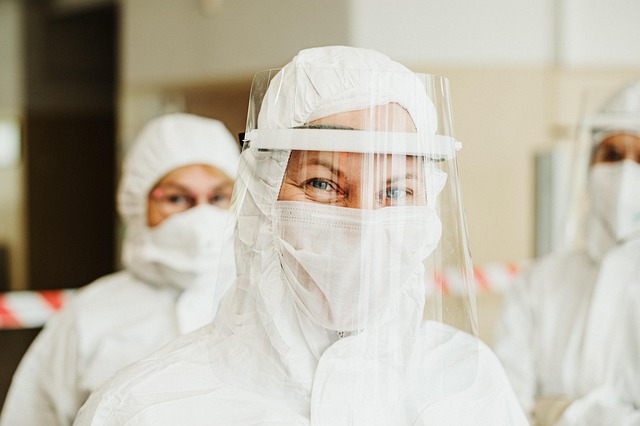Fast Relief & Safe Removal: Genital Warts & Dermatology Help

Genital warts, caused by HPV, require professional attention from specialized dermatology wart remov…….
Welcome to an in-depth exploration of the specialized healthcare sector focused on dermatology wart removal clinics. These facilities play a crucial role in addressing a common yet often embarrassing skin concern—warts. This article aims to provide an all-encompassing guide, delving into various aspects that define and shape this unique niche within dermatology. From its historical roots to modern advancements, economic implications, and global reach, we will unravel the multifaceted world of dermatology wart removal clinics. By the end, readers should have a thorough understanding of the importance, challenges, and future potential of these specialized care providers.
A dermatology wart removal clinic is a specialized healthcare facility dedicated to diagnosing, treating, and managing warts. Warts are non-cancerous skin growths caused by the human papillomavirus (HPV). These clinics typically offer a range of services including:
The practice of treating warts dates back centuries, with ancient cultures employing a variety of home remedies and natural treatments. However, it was in the 20th century that significant advancements were made. The introduction of cryotherapy (freezing) in the 1960s revolutionized wart removal, offering a quick and relatively painless procedure. Since then, numerous other techniques have emerged, each with its own advantages and limitations. Today, dermatology wart removal clinics leverage these advancements to provide effective, personalized care.
Warts are a common skin condition affecting individuals of all ages. While many warts disappear on their own, some persist or spread, leading patients to seek medical attention. Dermatology wart removal clinics fill an essential niche within dermatology by:
Dermatology wart removal clinics have a significant global presence, with countries adopting various approaches to managing this common skin condition. The World Health Organization (WHO) estimates that over 10% of the world’s population is affected by HPV-related warts at any given time. This translates to millions of individuals seeking treatment annually.
The demand for dermatology wart removal services varies across regions:
The global dermatology wart removal market was valued at USD 3.5 billion in 2021, projected to grow at a CAGR of 4.5% from 2022 to 2030 (Grand View Research). This growth is driven by rising healthcare spending, increasing awareness, and aging populations.
Private equity firms and venture capitalists have shown interest in dermatology wart removal startups, recognizing the market potential. Investments focus on:
In rural India, a local community clinic partnered with dermatologists from nearby cities to address the lack of specialized wart removal services in the region. Through regular visits and telemedicine consultations, they successfully treated hundreds of patients, improving access to care and patient satisfaction. This initiative highlighted the power of collaboration in addressing healthcare disparities.
A private dermatology clinic in New York City introduced Er:YAG laser treatment for warts, offering a quick, pain-free alternative to traditional methods. Within six months, patient feedback and follow-up surveys showed significant improvements in treatment outcomes and overall satisfaction. The clinic’s success led to increased adoption of laser technology worldwide.
In Australia, a school-based vaccination program targeting HPV was implemented to prevent warts and associated cancers. The initiative resulted in a substantial decrease in HPV-related health issues among adolescents, demonstrating the potential for preventive measures to transform public health outcomes.
Dermatology wart removal clinics play a pivotal role in addressing a widespread skin concern, offering specialized care that enhances patients’ quality of life. This article has explored various facets of these clinics, from their historical roots to cutting-edge technologies and global trends. By understanding the economic, technological, and regulatory landscapes, we can appreciate the significance of these facilities within the dermatology field.
As we look to the future, dermatology wart removal clinics are poised for growth and innovation. Personalized medicine, telemedicine, and advanced technologies will shape the way warts are treated, improving accessibility and patient outcomes. By addressing challenges head-on and embracing emerging trends, these clinics will continue to make a positive impact on individuals worldwide, ensuring healthy, confident skin.
Q: How common are warts, and who is most at risk?
A: Warts are extremely common, affecting millions globally. They often develop in children and young adults, but anyone can get them. Weakened immune systems and certain lifestyle factors increase susceptibility.
Q: Are all wart removal methods painful?
A: No, many modern treatments are relatively painless. Laser and topikal treatments cause minimal discomfort compared to older procedures like cryotherapy, which can be quite cold.
Q: Can warts lead to more serious health issues?
A: Persistent or untreated warts may indicate an underlying health condition or increase the risk of HPV-related cancers. Regular follow-ups with dermatologists help monitor for any complications.
Q: How effective are home remedies for wart removal?
A: While some people report success with home remedies, their effectiveness varies widely. They may not address the root cause and can be slow to resolve warts. Professional treatment options offer better chances of successful and lasting results.
Q: What is the role of vaccination in preventing warts?
A: HPV vaccinations are highly effective at preventing wart development and associated cancers. They are recommended for children and adolescents, offering long-lasting protection against specific HPV types.

Genital warts, caused by HPV, require professional attention from specialized dermatology wart remov…….